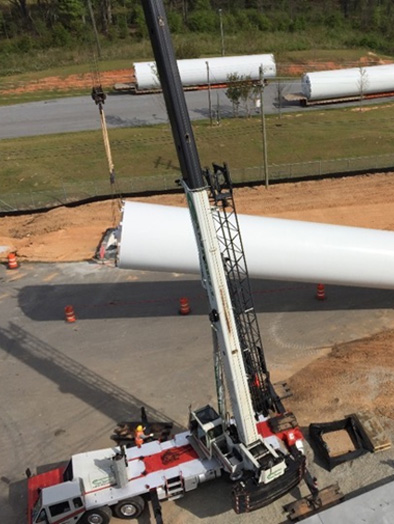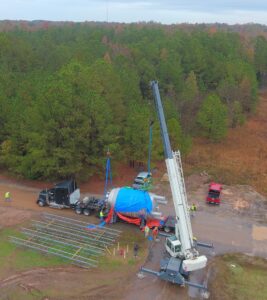
SPG CONSTRUCTION- CRANE SAFETY CONSIDERATIONS

CRANES
At SPG Construction, we operate Cranes on a daily basis. We conduct training on this equipment, we certify all of our operators, and we inspect our equipment daily. With all this, Cranes can still be very dangerous pieces of equipment.
Cranes, as all pieces of heavy equipment, if not properly operated, inspected and
maintained, have a potential of causing major bodily injury or property damage. Care
must be taken in all facets of crane operation.
Not only do cranes require a thorough annual inspection (a record of the dates and
results of these inspections must be maintained), they require inspection prior to each
use and even during use by a competent person.
All rated load capacities, recommended operating speeds, special hazard warnings or
instructions must be readily visible to the operator of the crane.
While cranes easily have the lifting ability to hoist employees on a personnel platform,
this is absolutely prohibited except in very special cases, i.e., when the erection, use,
and dismantling of conventional means of reaching the worksite, such as a personnel
hoist, ladder, stairway, aerial lift, elevating work platform or scaffold, would be more
hazardous or is not possible because of structural design or worksite conditions.
Dangers associated with cranes include numerous moving parts. These dangers can be
minimized or eliminated through ensuring that all guards are in place and not tampered
with.
Care must be taken to ensure that areas within the swing radius of the rear of the
rotating superstructure of the crane be barricaded to prevent a person from being struck
or crushed.
It almost goes without saying that all employees must keep clear of loads that are about
to be lifted as well as suspended loads.
Hand signals used to guide the crane operator will be consistent with the ANSI standard
for the type of crane in use and an illustration of the signals must be posted at the job
site.
Care must be taken while actually operating the crane in hoisting applications as well as
when relocating the crane superstructure.
If you are not directly involved with crane operations, keep clear!
Keep in mind that a mistake around an active crane could be your last — stay alert!
Note: Our company conducts scheduled safety meetings to focus attention on one major safety
topic per meeting. Should an employee have a question on any subject related to safety or
job procedure, it will be addressed by the person conducting the meeting.


0 comments